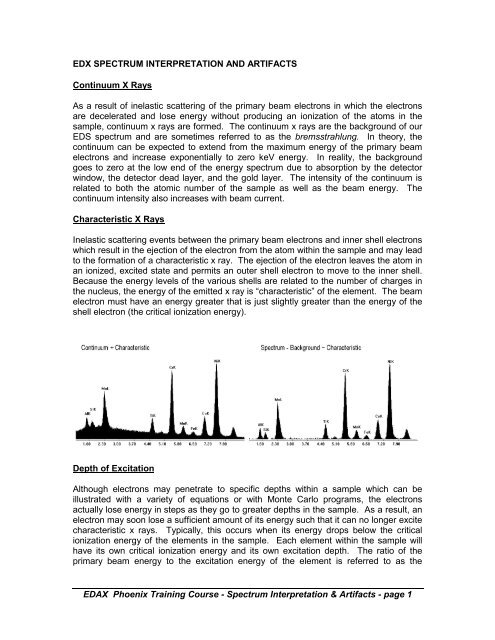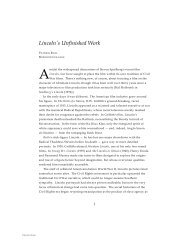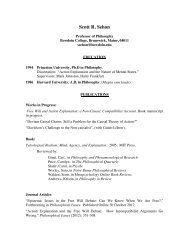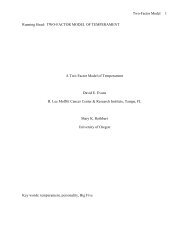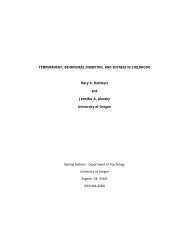You also want an ePaper? Increase the reach of your titles
YUMPU automatically turns print PDFs into web optimized ePapers that Google loves.
EDX SPECTRUM INTERPRETATION AND ARTIFACTS<br />
Continuum X Rays<br />
As a result of inelastic scattering of the primary beam electrons in which the electrons<br />
are decelerated and lose energy without producing an ionization of the atoms in the<br />
sample, continuum x rays are formed. The continuum x rays are the background of our<br />
<strong>EDS</strong> spectrum and are sometimes referred to as the bremsstrahlung. In theory, the<br />
continuum can be expected to extend from the maximum energy of the primary beam<br />
electrons and increase exponentially to zero keV energy. In reality, the background<br />
goes to zero at the low end of the energy spectrum due to absorption by the detector<br />
window, the detector dead layer, and the gold layer. The intensity of the continuum is<br />
related to both the atomic number of the sample as well as the beam energy. The<br />
continuum intensity also increases with beam current.<br />
Characteristic X Rays<br />
Inelastic scattering events between the primary beam electrons and inner shell electrons<br />
which result in the ejection of the electron from the atom within the sample and may lead<br />
to the formation of a characteristic x ray. The ejection of the electron leaves the atom in<br />
an ionized, excited state and permits an outer shell electron to move to the inner shell.<br />
Because the energy levels of the various shells are related to the number of charges in<br />
the nucleus, the energy of the emitted x ray is “characteristic” of the element. The beam<br />
electron must have an energy greater that is just slightly greater than the energy of the<br />
shell electron (the critical ionization energy).<br />
Depth of Excitation<br />
Although electrons may penetrate to specific depths within a sample which can be<br />
illustrated with a variety of equations or with Monte Carlo programs, the electrons<br />
actually lose energy in steps as they go to greater depths in the sample. As a result, an<br />
electron may soon lose a sufficient amount of its energy such that it can no longer excite<br />
characteristic x rays. Typically, this occurs when its energy drops below the critical<br />
ionization energy of the elements in the sample. Each element within the sample will<br />
have its own critical ionization energy and its own excitation depth. The ratio of the<br />
primary beam energy to the excitation energy of the element is referred to as the<br />
<strong>EDAX</strong> Phoenix Training Course - Spectrum Interpretation & Artifacts - page 1


